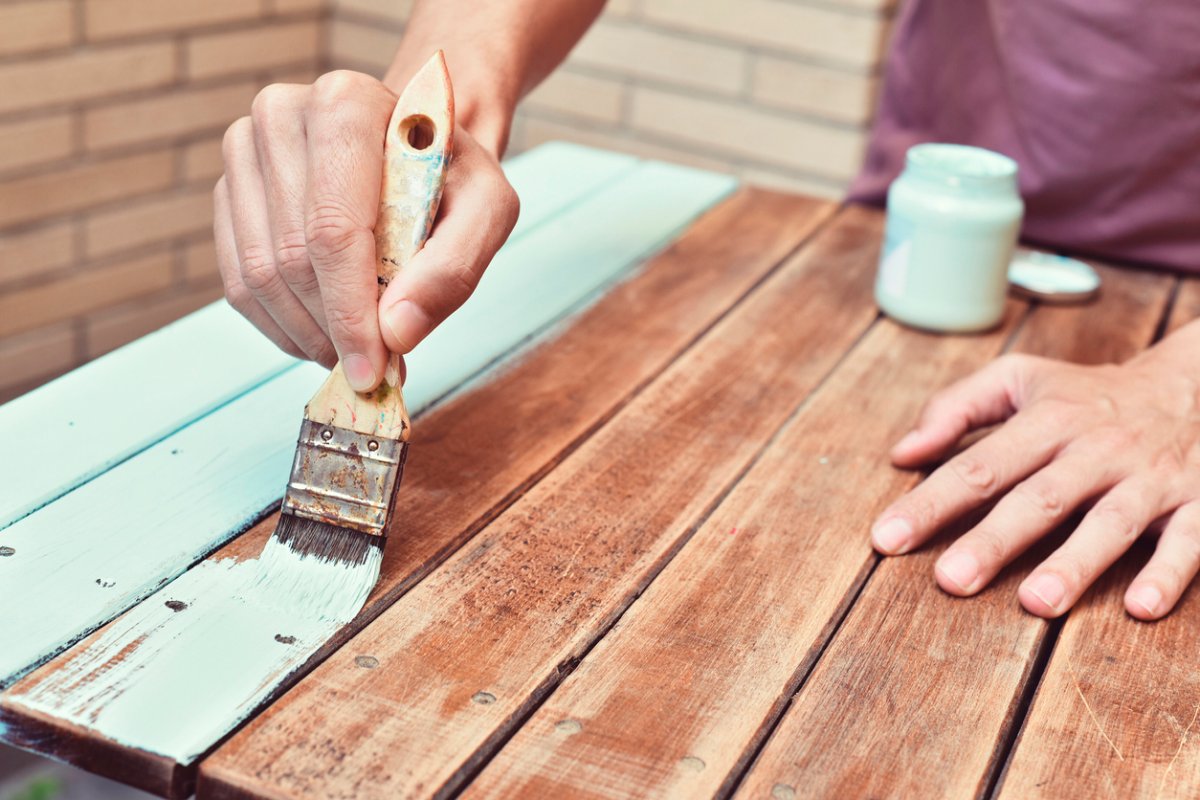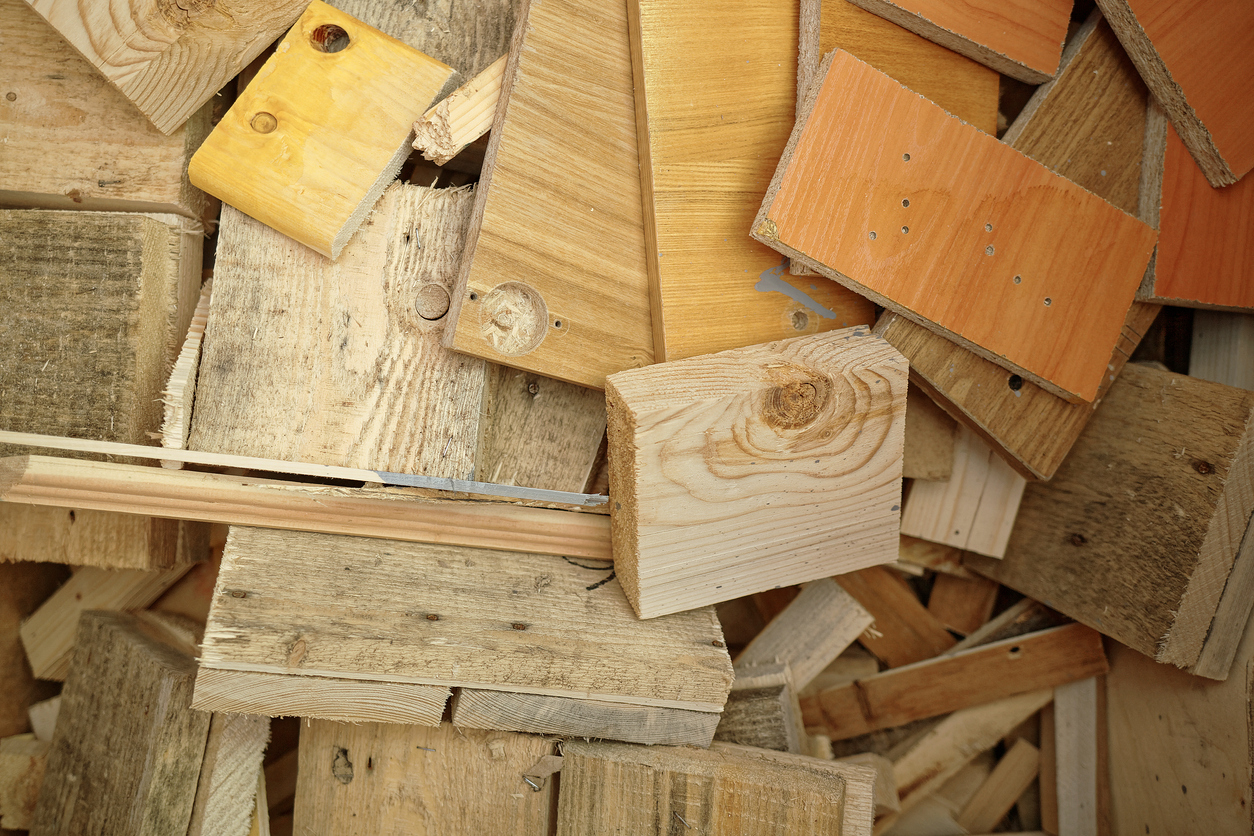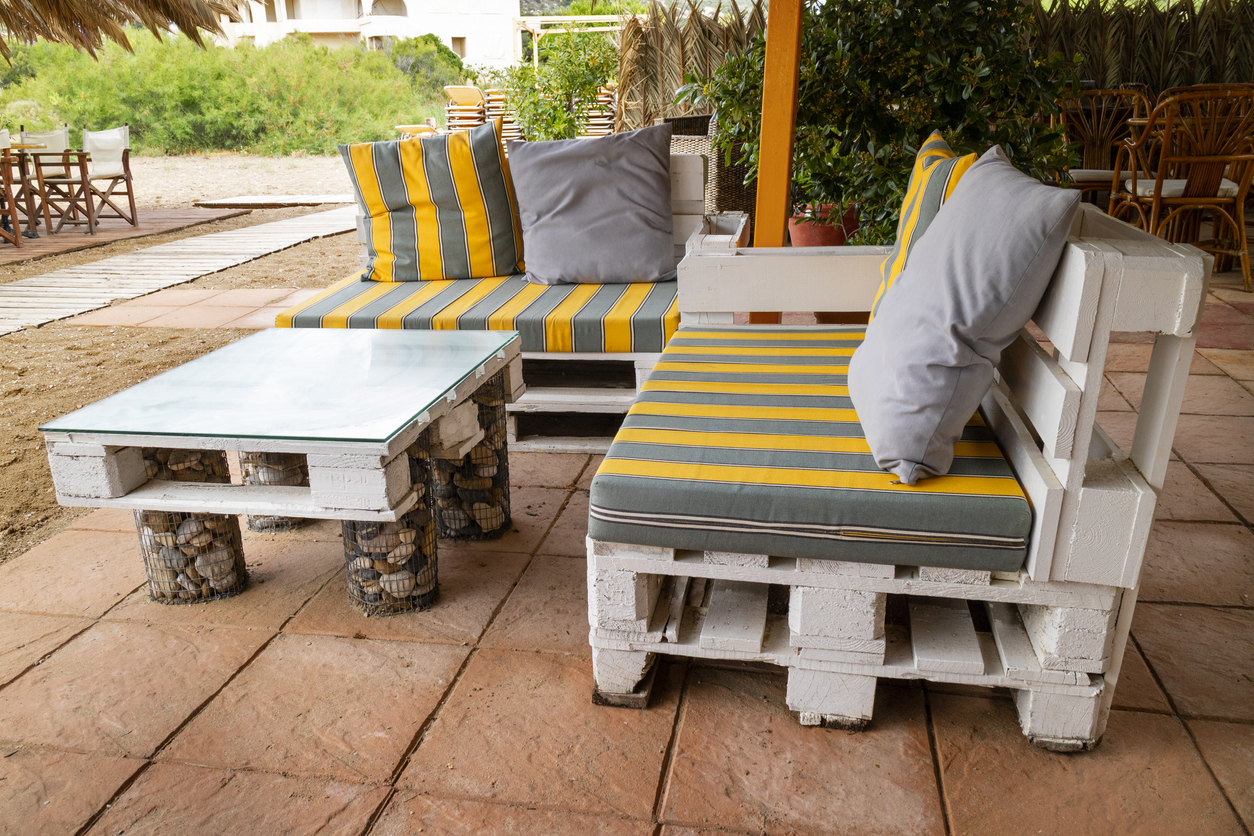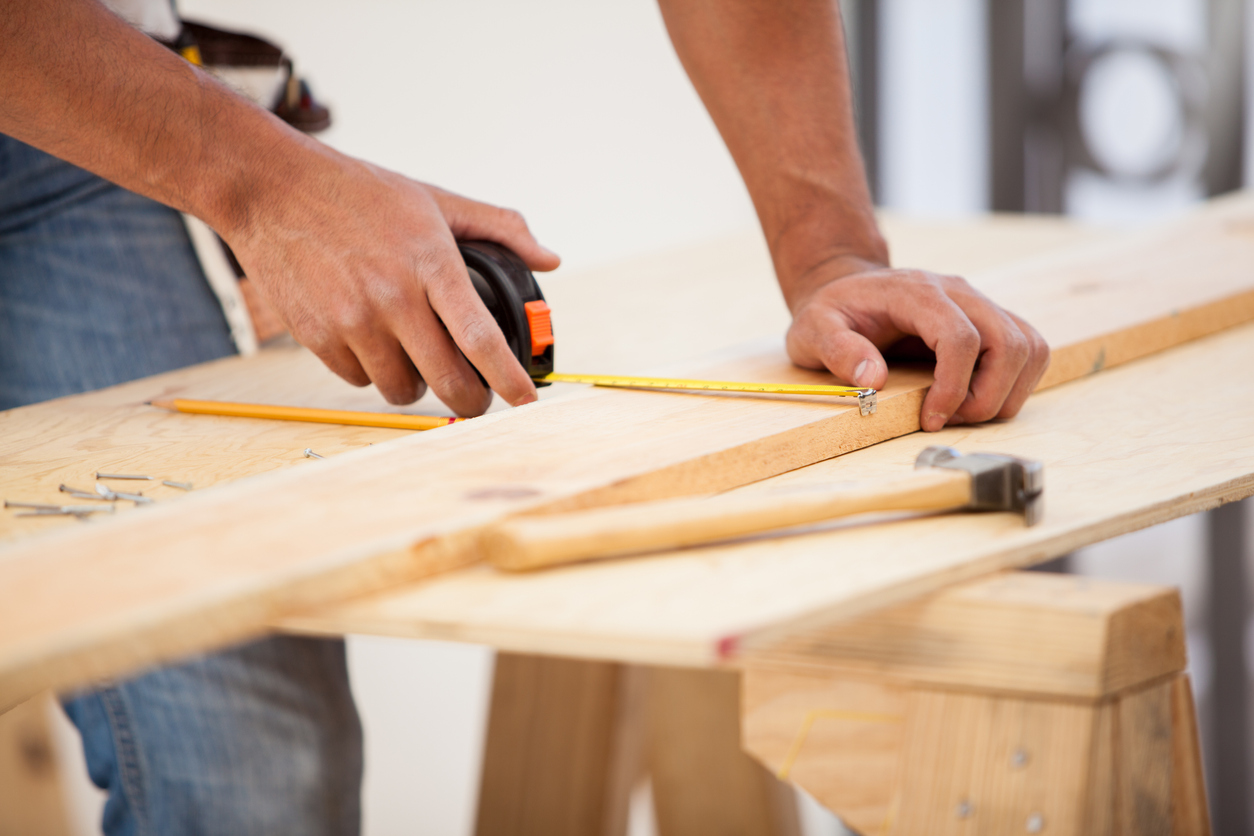

We may earn revenue from the products available on this page and participate in affiliate programs. Learn More ›
If you haven’t shopped for lumber recently, you’re in for a shock at how expensive a board is these days. According to Fixr, a site that tracks remodeling and construction trends, prices on some types of lumber have soared 430 percent since March 2020. Thanks to an industry slowdown during the COVID-19 pandemic, runaway lumber costs are driving up the costs of both new home construction and remodeling projects.
Outrageous wood prices are affecting DIYers, too, forcing many to postpone around-the-house projects that are now too expensive to undertake. Don’t pack away that hammer and saw just yet, though: Here’s how you can save money on wood and keep your projects on track.
Substitute a Lower-Grade Wood—or a Different Wood Altogether
Hardwood and sheet materials, such as plywood and OSB, are graded based on quality. If the wood you’re using in your project won’t be visible, you may not need wood that’s top grade. If you’re building a doghouse or storage shed, for example, the plywood used for sheathing will be hidden beneath the siding, so it doesn’t make sense to buy the highest-grade, most expensive stuff. A lower-grade sheet material can cost up to 40 percent less, and will be just as structurally sound.
Using less expensive wood in place of higher-dollar wood can help you save big bucks, too. Rather than building a deck from cedar, which gives many shoppers sticker shock these days, use treated lumber—the substitution can save you as much as 45 percent.
Related: Lumber Grades and Numbers

Scrounge for Scraps
When wood boards at the home improvement center are out of your price range, consider stopping by residential construction sites and asking permission to look for scrap wood in their dumpster. Some contractors will allow this and others may not, but it doesn’t hurt to ask. Still others may permit you to pick up scraps on the job site and keep them in return for helping clean up the site. Don’t expect to find long boards—those are in demand, and builders will not let those go to waste. If the project you have in mind can be made with smaller scraps of, say, 1 to 3 feet in length, you might just hit the jackpot.
Offer Demo Services
Reclaimed lumber from old barns and sheds is just as pricey as new lumber—sometimes it’s even more so, due to the elbow grease required to salvage the old wood. DIYers and woodworkers who don’t mind rolling up their sleeves and dismantling old barns, fences, and sheds may find that the structures’ owners will let them keep the reclaimed wood for their efforts. If you are up to the physical challenge of tearing down and removing the old structures, this can be a great way to get your hands on a substantial amount of lumber.
Related: 10 Pro Tips for an Easier Demo Day


Pallet Projects
Shipping pallets are typically made from hardwoods such as oak, walnut, or maple, and they’re constructed to support all types of heavy loads. After the workers unload items from these wooden pallets they may be willing to give them away, or let them go for a small fee. In general, DIYers are more likely to find pallets at smaller businesses. Some of the corporate, big-box stores receive so many pallets that they can return the pallets to manufacturers for refunds. Smaller stores get fewer shipments and thus may not have refund agreements with manufacturers.
Pallets take some time to dismantle, but each one provides approximately 10 board feet of lumber that’s suitable for use in rustic projects.
Recycle Furniture

Another way to score wood that’s in good shape is by purchasing old bookcases, cabinets, and other pieces of furniture at thrift stores—that is, if you don’t mind breaking the items down to usable pieces. Yard sales and online auctions are also excellent places to get bargain-basement deals on wood furniture.
Used furniture is made from a wide range of wood species, quality grades and finishes. Mixing and matching the wood won’t matter, however, if the dimensions meet your specifications and you plan on painting the project when it’s complete.
Order From a Sawmill
Not all sawmills sell directly to consumers, but some—often the smaller, independent ones—do. They don’t sell individual boards, though, and usually require a minimum purchase because they deal in bulk sales.
Ordering through a sawmill is a great option if you’re looking for enough lumber to build a garage, or you have a few friends that would like to go in with you and place a large order. If that’s the case, you can expect to save approximately 20 to 25 percent off the cost of buying lumber from a retail center.

Get a Contractor’s Discount
Local lumberyards—not home improvement centers—often offer contractors discounts of 10 or 15 percent because they want to keep their business. DIYers can often negotiate the same deal if they purchase a large quantity of materials, such as all the framing lumber, roofing, siding, and fasteners to build a storage shed. Lumberyards are less likely to offer discounts on small orders, so when you’re asking for a deal make a list of everything you’ll need to complete the project and present the list to the manager. As we said before, it can’t hurt to ask.
